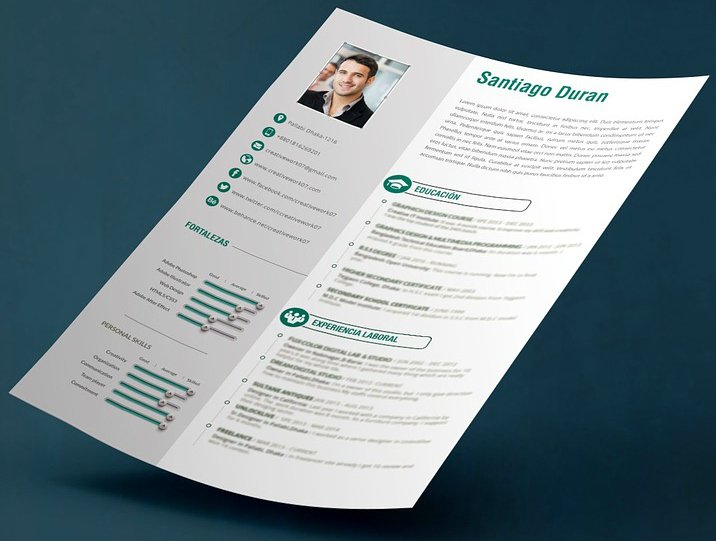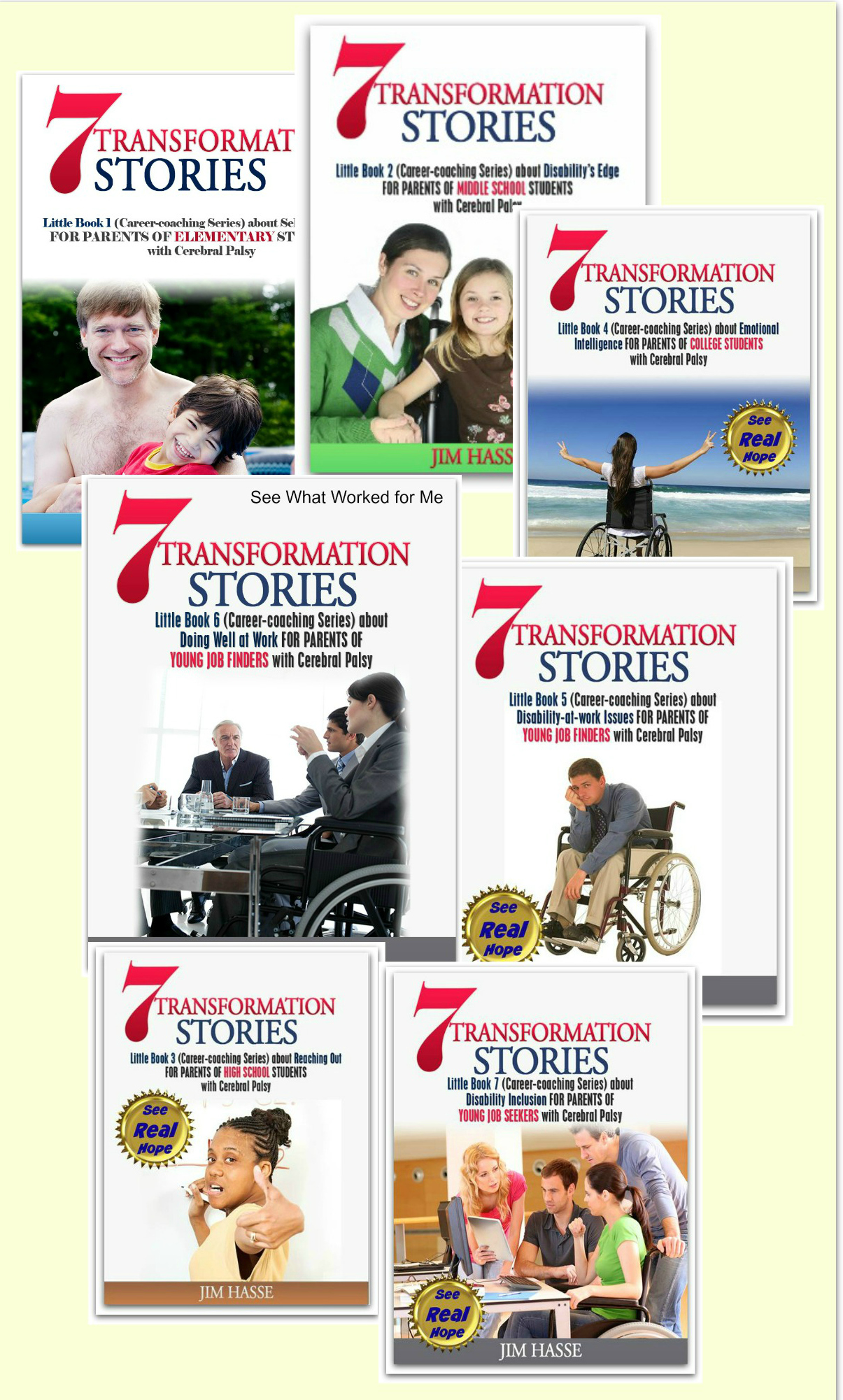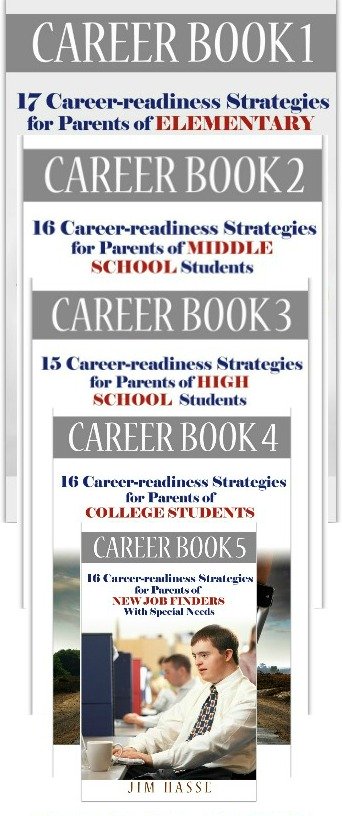Resume Writing:
Cerebral Palsy
Career Builder for College Students
By Jim Hasse, ABC, GCDF, Disability Employment Expert
_________________________________________________________
The key to resume writing, especially for your college student with cerebral palsy (CP), is the resume’s opening statement, which can end up being an important career builder.
In fact, in terms of resume writing, it doesn’t matter whether your college student's resume is scanned by a machine or a real person during the initial phases of a recruitment process. In either case, the most important part of his or her resume is the opening statement.
There are basically three options
for opening a resume: objective statement, summary statement and offering
statement. Developing any one option can be the toughest part of writing a resume.
Here’s how to explain those three resume writing options to your college student:
- An “objective
statement” explains, usually in one
sentence, what you’re seeking in a job as a job applicant. It briefly
describes your personal interests.
- A “summary
statement” tends to go into more detail and communicates what you can
bring to the table in terms of the job at hand.
- Like an “objective statement,” an “offering statement” is also very short. It says, "This is what I can do for you." It helps you focus your job marketing plan on meeting your targeted employer’s needs.
Let’s look at each of these resume writing options in more detail. As a mentor, I would explain each to my college student mentee like this:

Objective Statement
Showing an objective can convince
employers that you know what you want to do and are familiar with the field.
“Stating your objective on your
resume is optional -- having an objective for your resume is not; you need to
be clear about your employment goals,” writes Alison Doyle, a job search expert with many years of experience in
human resources, career development, and job searching.
If you include an objective on
your resume, Doyle points out, it's important to customize your resume
objective to match the position you seeking. The more specific your resume
objective is the better chance you’ll have of being considered for the job.
Here is a sample resume objective
statement:
“Obtain a position within the pulp paper industry where I can maximize my management skills and experience in quality assurance, program development, and training.”
Summary Statement
A summary statement can quickly
and effectively brand yourself to a prospective employer, according to Dana
Leavy, founder of Aspyre Solutions career coaching in New York,
which helps young and mid-level professionals find their way through the
process of career transitions and launch effective job search strategies.
Highlight your most relevant
strengths, skills and core competencies that are unique to you as a candidate,
versus a trait or skill that’s an industry or professional standard (i.e.
“multi-tasker” or “team-player”), says Leavy.
The summary statement should be
approximately four to six lines and speak to your professional background only,
according to Leavy. Do not address any outstanding circumstances
(employment gaps, change of career, personal experiences etc.). A cover
letter is an expanded version of the statement
Here is a sample summary
statement:
“Hands-on executive officer with extensive experience in food processing industry recognized nationally for planning, developing, implementing and measuring corporate-wide internal and external marketing and branding communication programs designed to align corporate goals with stakeholder interests, resulting in long-term stability and growth.”
Note that, in the above example, the candidate touched on the following elements, all of which are key to effective resume writing:
- Core
strengths and skill sets most relevant to his or her role.
- Past
relevant experience with key functions.
- Notable accomplishments that they intend to repeat in the next role.
Offering Statement
Blogger Mary Ann offers this recommendation about the focus of your resume’s opening statement:
"Replace the typical ‘objective statement’ that begins pretty well every resume with an ‘offering' statement.’ The former is ‘me’ oriented, and the latter is ‘employer’ oriented. An ‘offering statement’ is brief, reflecting well-selected accomplishments and skills of the job applicant, using action words. An employer is more interested in what an applicant has to offer than what the applicant's personal objectives are."
Mary Ann's resume writing observations coincide with what Nick Corcodilos, the headhunter,
maintains. In his book, “How Can I Change Careers?,” Nick
writes:
“...Go back to your past
accomplishments. What skills did you use? Make a list of those skills to help
you think about them. How did each accomplishment help your company become more
successful or profitable? It doesn't have to be a huge difference that you
made, but it has to be a difference that contributed to the bottom line. Now
take those skills and ask yourself, 'How would I apply them to solve the
problems and meet the challenges of the companies I want to work for?'
“...It takes a lot of work to develop this kind of statement. You have to learn a lot about the company you are pursuing, including exactly what kind of specific help a particular manager needs.”
Mary Ann's "offering statement" is what Nick calls a "value
offered" statement. I call it an “offering statement.”
A well-written offering statement is easy and quick
to present and pass along to the right decision maker.
Here is a sample resume offering statement:
"I will enhance your company web site's usefulness as a marketing channel by developing it as a gathering place for those within your niche disability audience who seek opportunities to discuss issues which are important to them."
In this example, the job seeker is marketing a service designed to meet a need
for a specific person within a particular company -- a service that only he or
she can best provide. That targeted employer could be the marketing manager of
a company which is trying to promote its particular line of adaptive technology
for workplace situations through a static web site.
An offering statement is like a
summary statement for a business plan. Like an offering statement, a summary
statement in a business plan often succinctly defines what value a proposed
project has for potential investors. In an offering statement, you're briefly
describing what value (specific benefits) you offer your potential supervisor.
You can often use your offering
statement outside of your resume and portfolio. It can come in handy when you
are updating your profile in LinkedIn, Facebook, Twitter or any other social
networking situation.
In all three resume writing approaches, the
upfront statement is often the first item read, so get to the point. As briefly
as possible, tell why your prospective employer should hire you -- regardless
of which resume writing option you use.
Return from Resume Writing to Interview Tips
Go to Cerebral Palsy Career Builder
This is Creative Commons content. You can freely and legally use, share and repurpose it for non-commercial purposes only, provided you attach this sentence and the following attribution to it (including the two links):
Originally written and illustrated by Jim Hasse, ABC, GCDF, owner of Hasse Communication Counseling, LLC, who, as a person with cerebral palsy, served for 10 years as a vice president in a Fortune 500 company during his 29-year career in corporate communication. He’s an Accredited Business Communicator, certified as a Global Career Development Facilitator and author of 14 Amazon books about disability awareness and disability employment issues.





